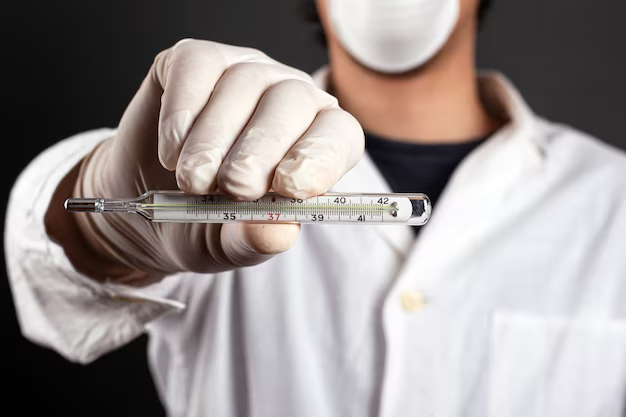Is Your Refrigerator Temperature Off? Master the Thermistor Test
Having a refrigerator that's not cooling correctly can be frustrating. While many factors affect a fridge’s performance, one common culprit is the thermistor. This small, yet crucial component plays a significant role in regulating the temperature within. In this guide, we’ll explore how to test a refrigerator thermistor—effectively transforming you into the Sherlock Holmes of kitchen appliances.
Understanding the Refrigerator Thermistor
What is a Thermistor?
A thermistor is a type of resistor whose resistance changes significantly with temperature. Most refrigerators use Negative Temperature Coefficient (NTC) thermistors. As the temperature goes up, their resistance goes down. Thermistors are critical in monitoring the refrigerator’s internal environment, ensuring that it cools efficiently without overworking itself.
Why is a Thermistor Important?
The thermistor communicates with the fridge’s control board, offering real-time data on temperature changes. If it fails, the board might incorrectly gauge the fridge’s temperature, leading to issues like overcooling, undercooling, or even total failure to cool.
Signs Your Thermistor Might Be Failing
- Fluctuating temperatures inside the refrigerator
- Persistent frost buildup in unexpected areas
- Unexplained temperature alarms or error codes
- Inefficiency in cooling despite functioning compressors and fans
Steps to Test a Refrigerator Thermistor
Before diving into the testing process, ensure your refrigerator is unplugged for safety. The test involves measuring the thermistor's resistance and determining if it aligns with expected values at specific temperatures.
Tools You’ll Need
- Digital multimeter – Necessary for measuring electrical resistance.
- Thermometer – To know the exact temperature during testing.
- Insulated gloves – For safety while handling electrical components.
Step-by-Step Testing Process
Identify and Access the Thermistor
Locate the Thermistor: Typically found in the fresh food section or near the evaporator in the freezer. Refer to your refrigerator's manual for exact details.
Unplug the Refrigerator: Safety is paramount. Make sure no electrical power is running through the appliance.
Access the Thermistor: Remove any covering panels. This might involve unscrewing parts and carefully setting the covers aside.
Measure the Thermistor’s Resistance
Note the Current Temperature: Use your thermometer to measure the air temperature around the thermistor before any testing.
Set the Multimeter: On your digital multimeter, set the measurement to ohms (Ω).
Connect the Multimeter: Attach the probes to the thermistor’s leads. It does not matter which lead you connect to which probe since resistance is not directional.
Record the Resistance: Carefully note the resistance value displayed on the multimeter.
Compare Resistance Values
Thermistors have specific resistance values corresponding to particular temperatures. Consult your refrigerator’s documentation for the expected resistance at measured temperature. Mismatches here are indicators of a malfunctioning thermistor.
What If the Values Don’t Match?
Inconsistent values suggest replacing the thermistor. However, ensure:
- No visible damage to wiring or connections
- Proper multimeter calibration
When Testing Isn’t Enough: Further Troubleshooting
Other Issues Affecting Thermistor Performance
- Wire Damage: Frayed or broken wires can lead to poor thermistor function.
- Sensor Positioning: Incorrect location might lead to false readings.
- Contaminants: Dirt or moisture on the thermistor can affect its operation.
Replacement Process
If the thermistor is confirmed faulty, replacing it is straightforward. Purchase the correct part specified by the fridge manufacturer, unplug the refrigerator, swap out the thermistor, and ensure all connections are secure before reassembly.
Professional Help
If doubts remain or results are inconclusive, seeking professional service ensures your refrigerator is back to optimal function without further damage.
Proactive Maintenance Tips
- Regular Cleaning: Keep components clear of dust and debris.
- Routine Checks: Periodically test the thermistor along with other fridge parts to preempt any failures.
- Monitor Fridge Temperature: Regularly check the internal temperature to catch potential issues early.
Summary: Key Steps on the Thermistor Testing Journey
🔧 Essential Steps:
- Unplug and locate the thermistor
- Use a multimeter for measuring resistance
- Compare with manufacturer’s values
🔥 Troubleshoot If:
- Results show incorrect resistance
- Any physical damage is detected
💪 Maintain Regularly:
- Clean and monitor the thermistor
- Perform consistent functionality checks
A Word of Parting Wisdom
Keeping your refrigerator in peak condition is part detective work, part maintenance specialist. Understanding the role and proper diagnosis of a thermistor can prevent small issues from snowballing into costly repairs or appliance replacements. By confidently wielding a multimeter and knowledge from this guide, you can ensure each component within contributes to a well-oiled kitchen machine.
